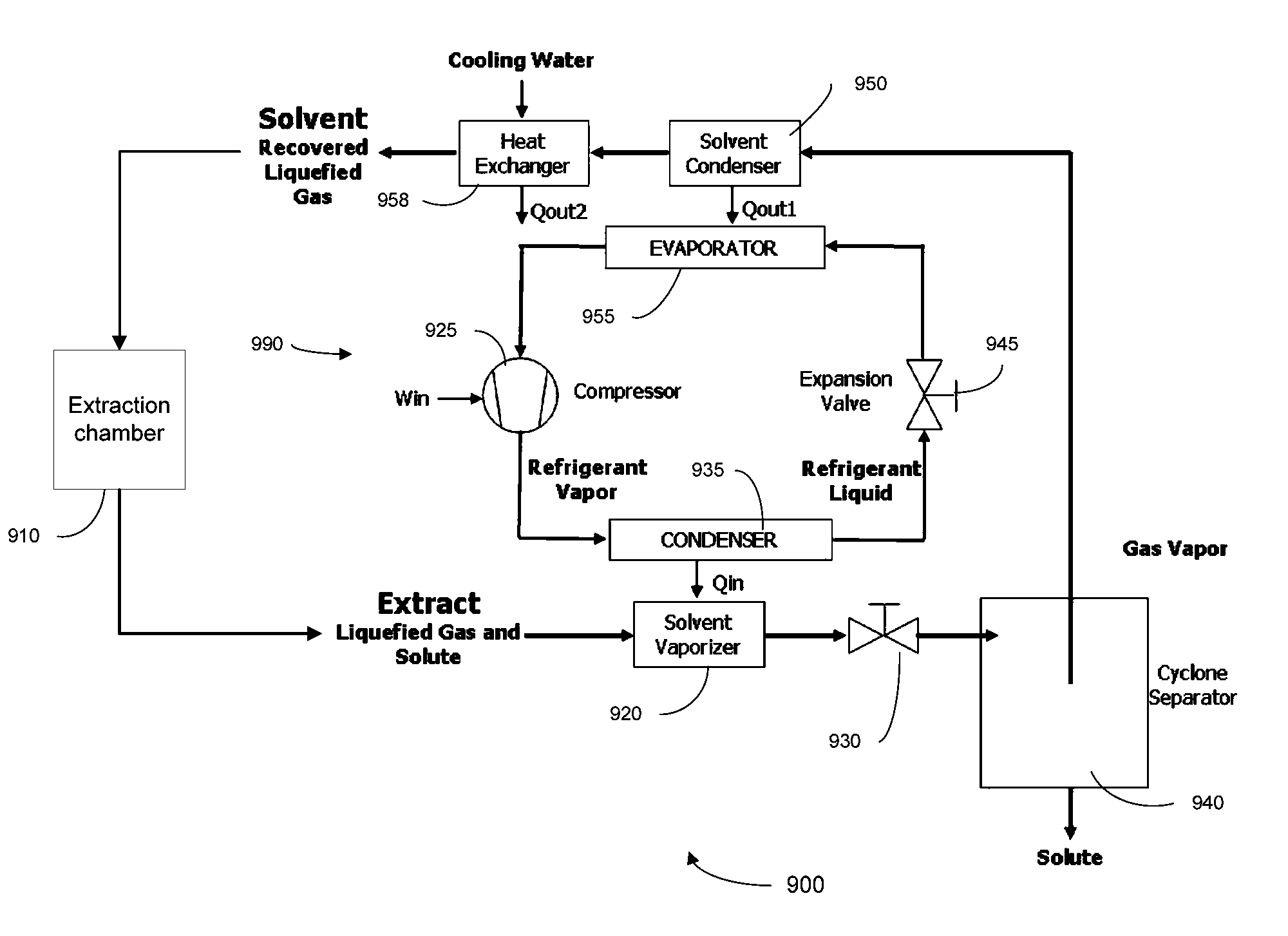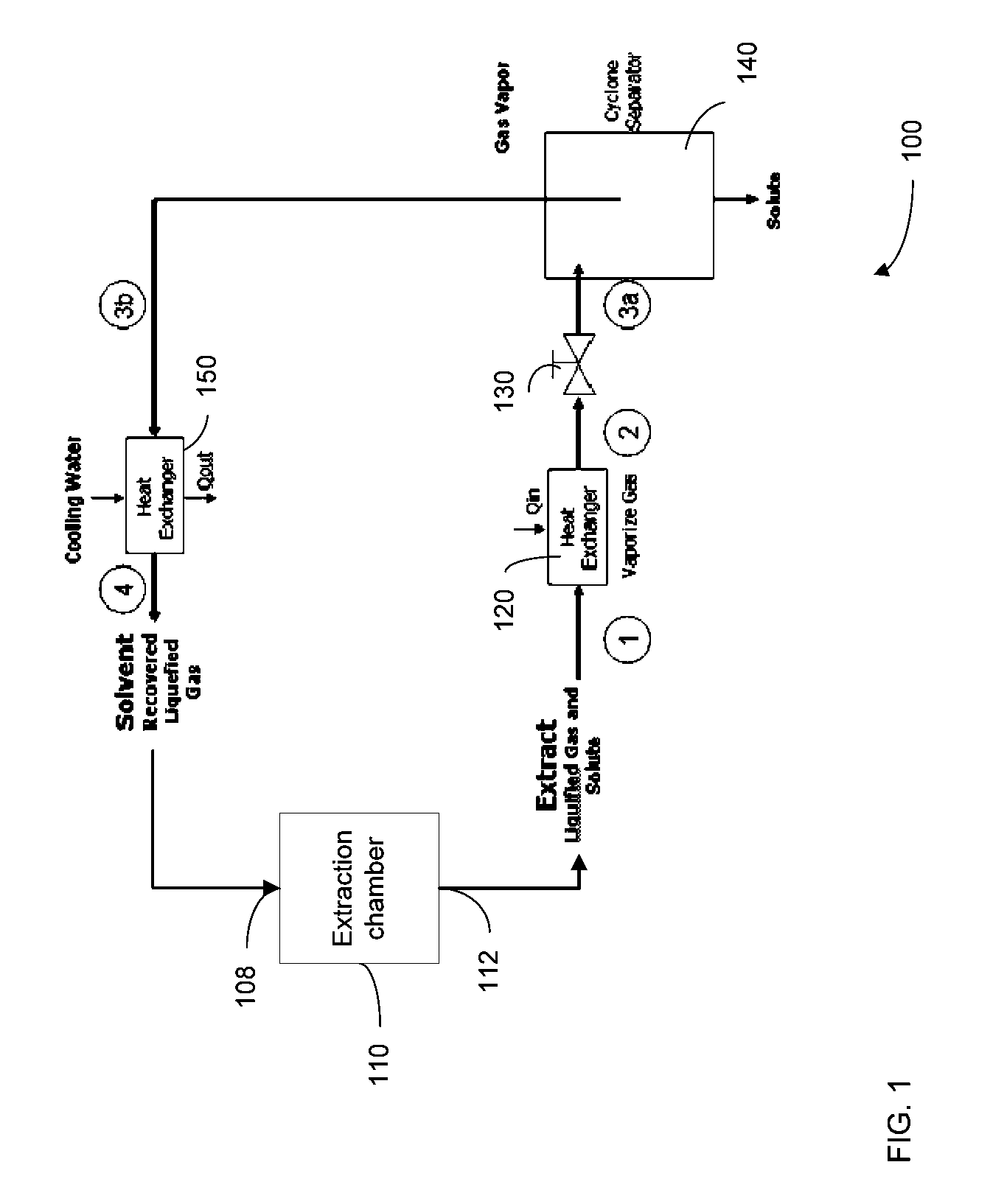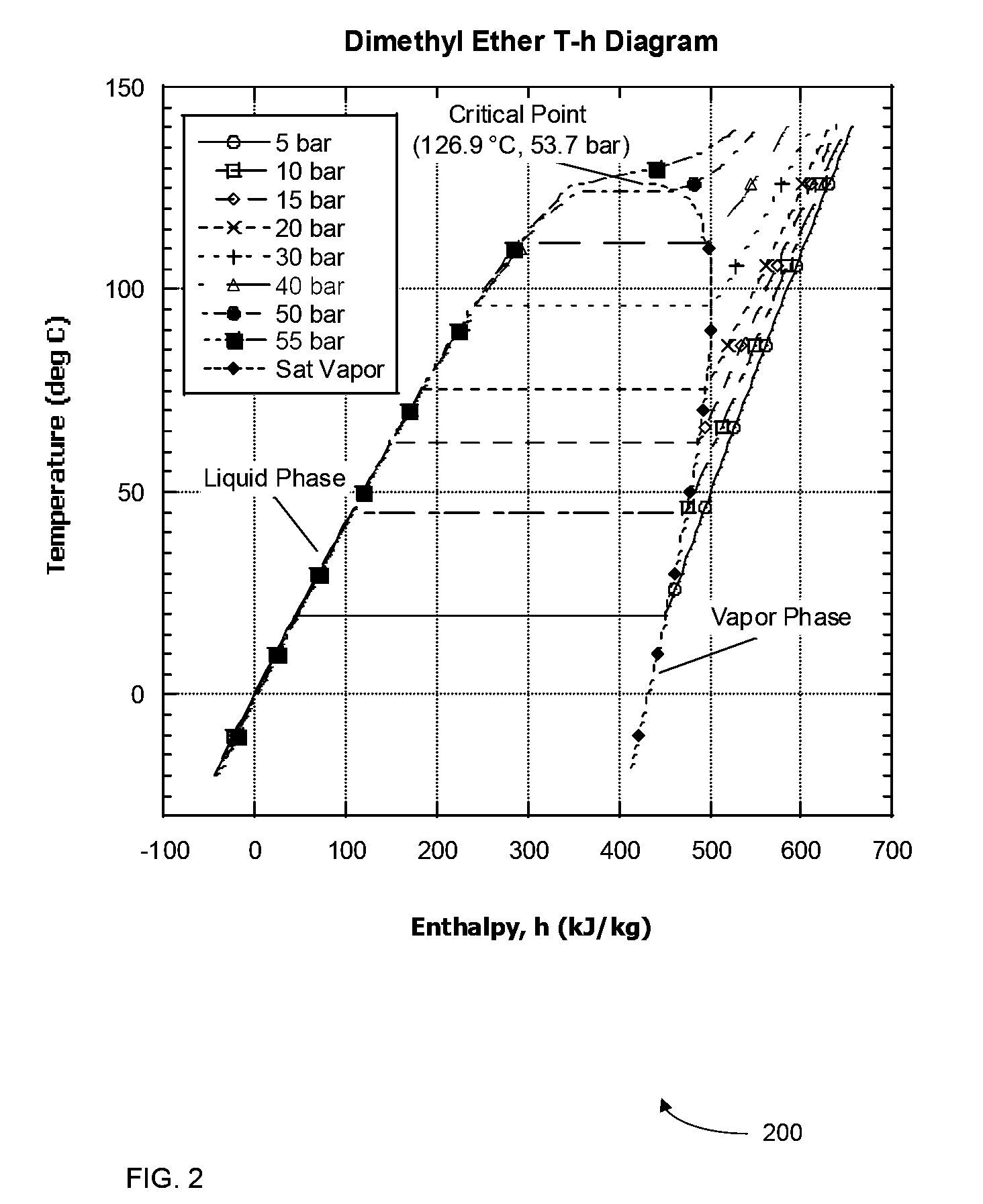Solvent extraction and recovery
a solvent extraction and solvent technology, applied in the direction of liquid degasification, lighting and heating apparatus, separation processes, etc., can solve the problems of solvent residue in end products, high design and operation costs, and requiring more energy, so as to improve the longevity of certain parts, increase the solubility of solutes, and increase the effect of pressur
- Summary
- Abstract
- Description
- Claims
- Application Information
AI Technical Summary
Benefits of technology
Problems solved by technology
Method used
Image
Examples
Embodiment Construction
[0031]Embodiments provide systems and methods for improving dense gas extraction and recovery. In one aspect, a buildup of solute (e.g. caused by a premature precipitation of the solute) in certain parts of the system is reduced, thus improving the longevity of certain parts. A pressure of the solvent / solute mixture obtained from an extraction chamber, typically at saturation conditions, is increased thereby providing the mixture above saturation conditions. The increased pressure may be obtained by a pump between the extraction chamber and a vaporization chamber.
[0032]Additionally, systems and methods isolate process conditions of the separation process and the extraction process. This isolation may also be obtained by a pump between the extraction chamber and a vaporization chamber. In this manner, the process conditions (e.g. temperature and pressure) for the separating process can be maintained, providing efficient separation, while the process conditions of the extraction chamb...
PUM
| Property | Measurement | Unit |
|---|---|---|
| temperature | aaaaa | aaaaa |
| pressure | aaaaa | aaaaa |
| temperature | aaaaa | aaaaa |
Abstract
Description
Claims
Application Information
 Login to View More
Login to View More - R&D
- Intellectual Property
- Life Sciences
- Materials
- Tech Scout
- Unparalleled Data Quality
- Higher Quality Content
- 60% Fewer Hallucinations
Browse by: Latest US Patents, China's latest patents, Technical Efficacy Thesaurus, Application Domain, Technology Topic, Popular Technical Reports.
© 2025 PatSnap. All rights reserved.Legal|Privacy policy|Modern Slavery Act Transparency Statement|Sitemap|About US| Contact US: help@patsnap.com



